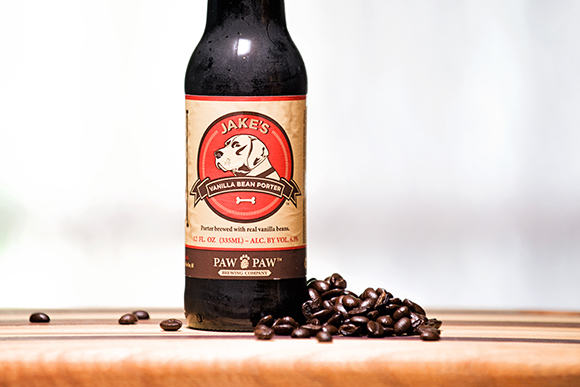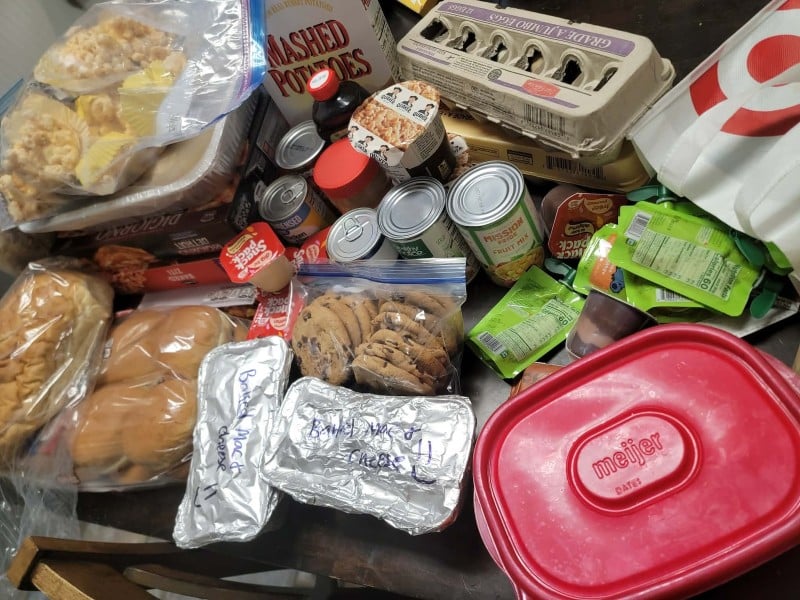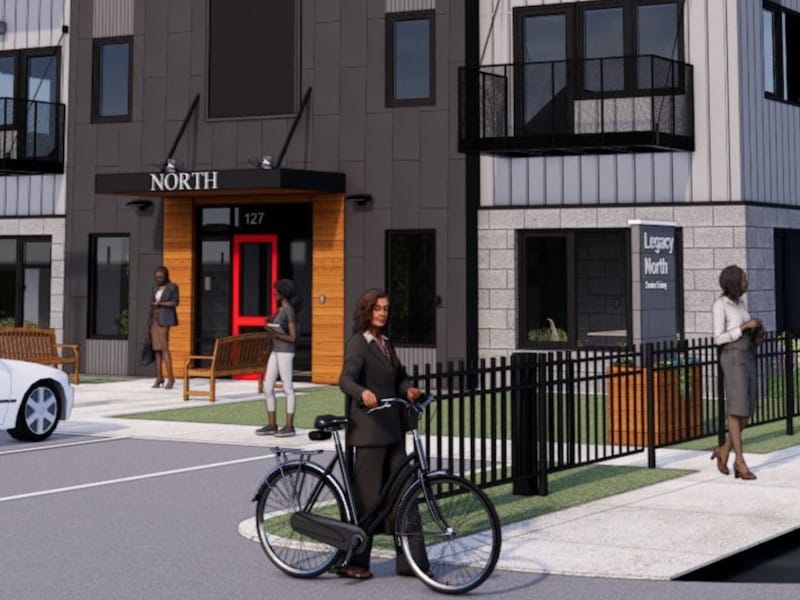More coffee and beers are coming in the same glass
Who knew? Turns out the flavors of coffee and beer can be complementary. Jeremy Martin reports local brewers and roasters are getting together to bring out the best in both.
For many people, morning doesn’t officially begin until that first cup of coffee has been consumed, and their day can’t be fully capped until they’ve sat down and enjoyed a relaxing evening beer.
The two beverages are cherished around the globe for their abilities to stimulate and intoxicate and have for centuries held a special place in the routines of many, acting as perfect bookends to begin and end the day.
Though both beverages have distinctive and exciting histories, the two are not as technically different as one might expect. From tasting notes and industry language to pride of craftsmanship–they embrace quite a bit of common ground, and as a number of local brewers and consumers are finding, beer and coffee combine to make a unique and tantalizing brew.
“They are both beverages with some sort of tradition. I draw a lot of parallels between coffee and beer,” says Seth Chapman, head roster for Kalamazoo’s Water Street Coffee Joint. “I’ll have brew masters come here and do coffee cuppings to help decide what types of coffee they’d like to use. And a lot of the vocabulary we use in the coffee and beer industries are interchangeable.”
For example, a cup of coffee that is considered “bright,” will often be high in acidity, show a light caramel or deep lemon in color, while showcasing citrus, berry, and floral notes. The same can be said about many IPA’s, pales and some hoppier pilsners.
Darker beers such as stouts, browns and porters will show off a robust smokiness or chocolate scent on the nose with creamier mouthfeel and earthy, sweeter notes upon tasting. Coffee drinkers can draw parallels to those same characteristics in many espresso blends and darker roasted beans.
These parallels are a primary reason brewers often choose coffee blends that have been roasted longer and taken on sweeter, smokier characteristics, to use in their beers–that and dark roasts with their lower caffeine content make for a safer, more stable drinking experience than one would get when mixing high ABV beer with highly caffeinated coffee.
Ask any brewery and they’ll tell you that flavor and drinkability trump all other concerns when making coffee beers.
“Caffeine is not always the brewers’ main concern. Most brewers choose dark roasts because coffee is going to contribute dark colors and roasted flavor, it complements the malts that make that beer dark,” says Chris Moersch, head brewer at Round Barn Brewing in Baroda.
Caffeine content will obviously vary depending on how much coffee is added to the brewing process and the way in which it is added. However, a general rule of thumb says you should expect to consume around 2 mg of caffeine per 12 oz. of beer.
For perspective, a generic, commercial cup of restaurant coffee contains about 95 mg of caffeine. So, unless you have an extreme sensitivity or allergy, the alcohol content will get to you well before you feel the effects of the caffeine.
Stimulant quantities aside, finding the correct combination of malts and coffee to create a beer that is enjoyable without being overpowering is no easy task and often comes with plenty of trial and error.
Both coffee and beer are highly complex, layered beverages whose textures, aromas and flavors change over time. Isolating a certain varietal or blend of coffee that will complement a beer without overpowering it can be tricky, and is one of the reasons very few brewers choose to use coffee in lighter beer with flavor profiles that are bit more tender and subtle.
Although Moersch says he will bounce between several different coffee varieties depending on the beer he is making, he often comes back to a Hawaiian Kona blend that balances low acidity with deep and creamy flavor.
Nick Chard of Bravo! in Kalamazoo has been using in his java stout Water Street’s espresso blend, which he finds to have a low bitterness level, leading to a more enjoyable drinking experience.
“It has a lot of darker features, like chocolate, which was what I was going after, it doesn’t seem too abrasive. I put a lot of roasted malts in there that already had some of that roasted coffee flavor, so it seemed like a good fit,” Chard says.
Bravo! recently released Chard’s java stout on draught but has also held a portion back to age in bourbon barrels. Chard intends to release the bourbon barrel java stout in the near future and pair it with special menu items.
With another batch of coffee flavored beers, some breweries are choosing to forgo the coffee all together.
Saugatuck Brewing Company’s No Java Stout is a smooth but robust drinker that pours dark, and has tasting notes of roasted coffee and sweet cream with a subtle, bitter kick at the end; basically it’s a latte in beer form. There is, however, absolutely no coffee used in its creation.
No Java Stout is one of several beers on the market that relies on the naturally dark, roasty and earthy characteristics of certain malts to replicate the flavor signature of fresh coffee.
Gonzos Big Dog Brewing is another area establishment producing a big coffee like beer sans the magic bean. Into the Night Stout stands at a hearty 8 percent ABV and can easily fool the tongue into believing you’re sipping an iced coffee, but it’s simply the combination of malts that produce the flavor of coffee.
How coffee and beer combine
Beyond choosing the correct malts and deciding on the perfect blend of coffee, other factors such as timing the addition of ingredients to how the coffee was ground will make or break a coffee beer.
“When you’re adding the coffee to the beer it (the coffee) is ground, not brewed. It’s similar to if you’re going to do a cold brew. We use a very, very coarse grind,” Chapman says. “If you grind it too fine, it would probably over extract and become super bitter. By doing the courser grind, you’re holding back the amount of extraction.”
Chapman is right on the money when he compares creating coffee beers to making cold brewed coffee. In many ways it’s a very similar process–at least on the molecular level.
As Julia Leach, owner of Colorado-based manufacturer and distributer of cold brewing equipment and accessories,Toddy, says: “When you’re brewing it (coffee) with hot water, you’re pulling out all the compounds that are heat soluble, as well as the water soluble ones. When you chill hot coffee, a lot of things happen. A lot of the heat soluble compounds in coffee are very delicate and they decay rapidly. A lot of the flavors change, the aromas change; what was once a great cup of coffee quickly becomes something that is not enjoyable at all.”
In essence if you were to brew coffee and add it to cold beer, the molecular structure of the coffee would change, altering the flavors, textures and aromas in ways that would probably be unpalatable and blend poorly with the malts, hops, and barley of the beer.
But by adding ground coffee at room temperature or cooler, brewers are making sure only the water soluble compounds of the coffee are extracted, compounds that tend to be less delicate and prone to decay.
“We typically add the coffee towards the end of the process, 24-48 hours before fermentation. We’ll put it in there when the beer is at 32 degrees during carbonation, because you extract less bittering components doing a cold extraction rather than a hot,” Moersch says.
Area breweries, including Bell’s, Greenbush, Dark Horse, Arcadia and Tapistry, have all released coffee beers, many of which feature locally roasted coffee from places such as Water Street, The Ferris Coffee and Nut Company and Kalamazoo Coffee Company.
As many breweries see it, the combination of coffee and beer gives folks who may not drink beer much, or those who may not enjoy coffee often, an opportunity to revisit the flavors and try something they may not otherwise try.
“I’ve met a few people who are not big beer fans, but are big coffee fans,” Moersch says. “It’s been a good bridge for them to transition over to the craft beer world.”
Jeremy Martin is the craft brew writer for Southwest Michigan’s Second Wave.

















